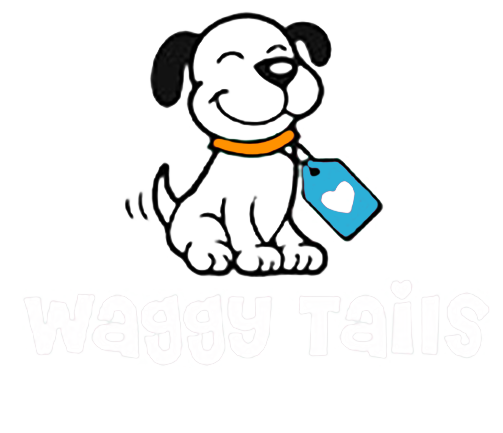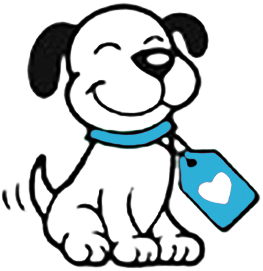WAGGY DOG BLOG
Nutrition 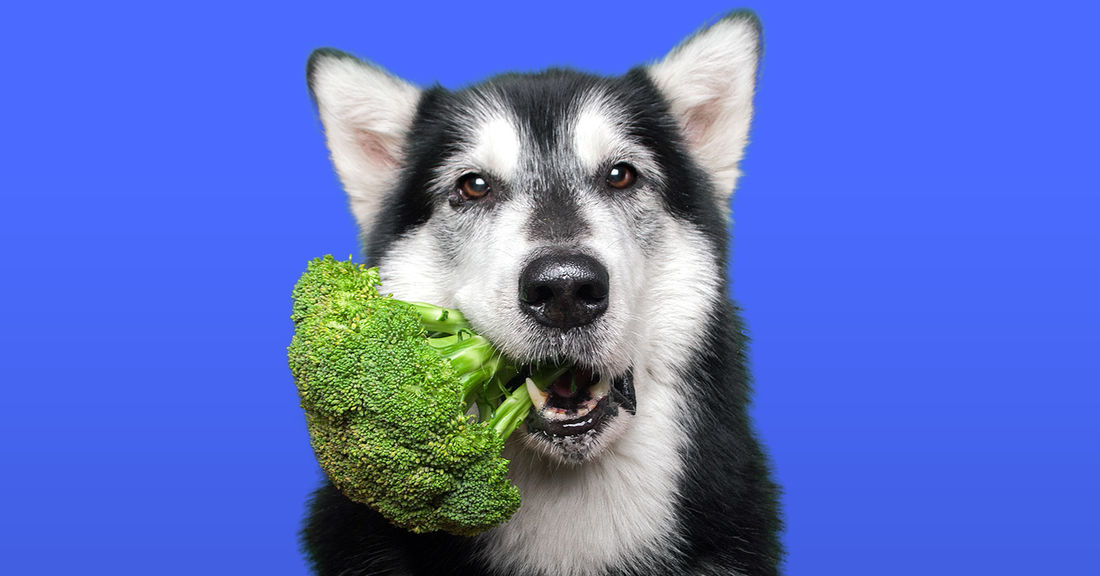
We are what we eat and this is equally the case for our dogs. Feed your dog real & raw food and be in charge!
We carry a range of free range, chemical free, raw meat and bones, freeze dried natural and preservative free gourmet dog treats and organic, grain-free pet food which can also help maintain and even improve the health and vitality of your BFF.
Come in a check out our range of treats and food.
Nature Dog raw dog food
Laila & Me natural dehydrated & freeze dried raw treats
K9 Natural - freeze dried raw supplement boosters, toppers & treats
Ziwi Peaks - Air dried raw Lamb & Chicken, an alternative to kibble
Belle & Bone freeze dried raw treats
Black Dog natural dehydrated treats
Veggie Paws healthy, homemade, wheat free, gourmet dog treats
Tumeric Life (golden paste) dog bites
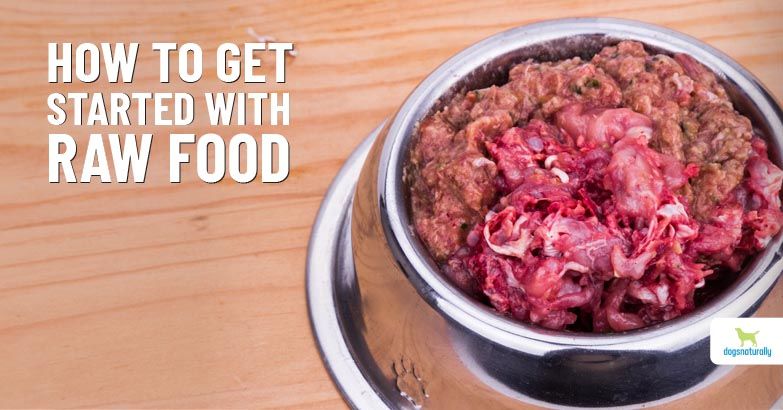 Thinking about feeding raw but don’t know where to start?
Thinking about feeding raw but don’t know where to start?
It’s undeniable that a raw meat, organ and bone-based diet is what canines are built for, one needs only to look at their teeth and anatomical structure to see this. Your dog’s hinged jaws are strong and equipped with teeth for tearing and crushing meat and bones. Over time, savvy businesspeople capitalized on the fact that people wanted cheaper and mass-produced sources of food. This led to canned meats that have evolved into the cereal, grain and processed carbohydrate ridden pet foods we see today. Whilst this food was easier to transport, store and sell, (making it appealing for manufacturers, retailers, and consumers) it does nothing beneficial for your pet. Presently, dogs are plagued with all manners of health issues and allergies. Often the disease is treated without addressing the cause. We firmly believe that returning back to a dog’s natural diet will nurture and fuel your dog’s health, offspring, and overall well-being.
Oral Health & Well-being
One of the more notable features of a dog is of course their mouth. Their teeth, jaw and mouth structure has been designed to suit a carnivorous diet. Whilst dogs can survive on a variety of food, it is often forgotten that these carnivorous variants are not only for nutritional value, but for hygiene and mouth health. A diet including bones, helps remove tartar build up. Chewing on a bone cleans the gums and teeth, promoting overall oral hygiene. Diseases of the mouth can often spread to the head and other parts of the body. A recent study of 60,000 canines has proven a link between gum disease and heart disease in dogs. It is important to prioritise your pet’s oral health and hygiene.
Physical Development Dogs
Dogs undertaking working or sporting duties require the correct structure and muscle development. If we study the diet of human sporting athletes we can see that they consume a diet that provides the right nutrients for their physical and mental health. Dogs are plagued by hip dysplasia, ACL and bone diseases with the root causes not being discussed. Blame is instead placed on genetics rather than malnutrition, which we believe is the cause of most these ailments. Consideration must be placed into providing the correct nutrition for your dog to ensure they have the foundations to properly develop their bones, muscle and ligaments to their full potential. For example, a large dog can grow more than 400 grams per month, the right nutrition must be provided to keep up with this growth rate to ensure they are healthy throughout their adult years.
Canine Allergies
Pets, like us, need diversity in their diets. Providing the same food to your pet each day increases the possibility of them developing an allergy to it. The style of food you give your pet is important as well, as there are high chances the meat contains added antibiotics and hormones, which can cause your dogs immune system to overreact. We caution against the overuse of antibiotics as they also destroy good bacteria. The majority of your dog’s immune system is located in the GI tract, which means the right balance of gut bacteria is vital for their protection against allergies and determines their overall health. This is why a raw diet is the key to fighting allergies and to building a solid foundation of health. Raw diets are easily absorbed by the dog and do not clog up their GI tract with “fillers”, which can be found in most kibble and processed pet food/ meat.
Mental Stimulation
The very act of chewing and relishing a bone provides mental and physical stimulation, whilst also being an enjoyable past time for your pet! It is a wonderful stress reliever and a filling, healthy meal for your dog to sleep off and digest.
Stronger Immune
A raw diet strengthens a dogs immune system. It does this by delivering a balance of essential fatty acids, trace elements, cartilage, marrow, immune normalising agents, and strengthening nutrients that all help fight infections and reduce inflammatory conditions. The omega-3 fatty acids in fresh fish act as immune boosters by way of increasing the activity of phagocytes; the white blood cells that eat up bacteria. Essential fatty acids also protect the body against damage from overreactions to infection.
Less stools
Natural raw feeding has NO FILLERS. Fillers such as rice, corn, and soy are cheap to provide the huge profit margins involved with kibble sales. Pet food companies are always researching for new and clever fillers that appeal to their consumers. For example, “grain free” is the latest buzzword, which simply means another cheap filler has been used instead of the grain. Just because it’s “grain free” it doesn’t mean it will be of nutritional value or benefit to your dog. It could be potato or beet pulp, it’s still a filler. Raw meaty bones, meat, organs, and offal contain no fillers, every gram your dog eats is direct nutrition and readily absorbed by their system, which is why the stools are smaller. Research conducted showed up to 70% of dogs stools was made up of what was fed to dogs the day before.
Skin issues
Skin issues and yeast is a massive scourge to an increasing number of dogs. The skin is a living organ and reflects their health externally and gives an insight to their internal health as well. Yeast thrives on sugar and carbohydrates. Kibble or dry food is simply more fuel for the yeast to feast and grow. The medication used to treat such issues can become obsolete when sugar and carbohydrate ridden kibble is given to your dog. Raw feeding provides almost no carbohydrates and sugars, so this condition is starved of its fuel, whilst providing your dog optimum nutrients that fortifies it’s immune system and other vital elements such as the epidermis and coat. This is a simplified example of how feeding a correct diet satisfies the nutritional needs of your dog.
Raw versus Processed
Did you know that cancer is the number 1 killer in our dogs today? Studies have shown that disease problems in dogs have increased concurrently with the increased consumption of processed and cooked dog food. We know dogs are not designed to digest rice, wheat, cereals, corn etc. Grains are difficult for a dog to break down. They can cause problems with the mouth and digestive system as the dog needs to work hard to digest such food. However, you will find that most processed dog foods contain large amounts of grains as these are cheap fillers to add weight to the product
BENEFITS OF RAW FOR YOUR DOG
- Glossy coat.
- Sweet smelling breath & Clean teeth and gums.No brushing of teeth required or visits to the vet for dental cleaning.
- Easy to pick up biodegradable poo’s and Less smelly farts!
- Skin issues Elimination or greatly reduced & Less visits to the vet.A Raw diet will help boost your dog’s immune system
- No more expensive flea treatments.An unhealthy, smelly, overweight dog fed on processed canned & dry food makes a tasty host for our least favourite guests. After a couple of months on a raw diet this problem should ease and be eliminated.
- Lean muscle tone & Increased energy!Your dog will be lean in muscle and not rolly poly in fat
Study - Raw meat diet best for dogs + fresh food diet increases longevity in dogs
Myths
There are many popular myths about feeding dogs, many of which are ‘manufactured’ by companies and individuals to suit their own interests – usually profit! Myths such as…
- Dogs don’t eat bones.
- All dog food should be cooked.
- Every dog’s meal should be complete and balanced.
- Canned and kibble is convenient and cheap.
- All dog food should be processed.
- Dogs eat grains, pasta and rice.
- Dogs eat every day.
- Consumption of raw meat incites aggression in dogs also known as ‘blood lust’.
Raw Meaty Bones
Raw meaty bones are a major component of what your dog needs and wants in his diet. In fact, up to half of a dog’s diet can comprise of raw meaty bones. Raw bones are a great source of calcium and good fats plus they act as ‘Nature’s toothbrush’ for your dog as such Nature Dog encourages you to feed lots of raw meaty bones to your dog. The best bones are the ones that come from young animals such as chicken and lamb. These bones are relatively soft and your dog should be able to eat the whole bone. Any part of a chicken, for example a chicken neck, chicken wing or the whole chicken carcass are great. A lamb neck, turkey neck or turkey wing or other parts of a lamb, turkey or duck are good options.
Larger, longer, weight bearing bones can be a lot harder on your dog’s teeth and your dog may not be able to digest such a large, hard bone. So you may find these ones discarded around the back yard!
Puppies - From six weeks of age, you can start off with meaty chicken ribs and chicken wings as the bones are not too dense so are considered soft for puppies to build up jaw strength plus some muscle meat to make up the ratios. Some raw fish is also a good starting food for puppies as the bones are also nice and easy. To help them get their small teeth into it, just slice into the meat a bit so they can chew into it easier. Chicken skin in particular should be sliced as they find that hard to chew through as it’s stretchy!
Chicken wings should have the wing tip cut off at the third joint, as if the puppy is tempted to swallow it whole, the double joint of the wing is a major choking hazard. Between four and six months of age puppies cut their permanent teeth and grow rapidly. At this time they need a plentiful supply of meaty carcasses or raw meaty bones of suitable size.
Warning: NEVER feed a dog a COOKED bone. Cooked bones can easily splinter and may cause serious damage to a dog’s intestines, throat or mouth and could cause choking, plus the cooking process actually depletes them of much of their nutrients and goodness
Dr Karen Becker & Rodney Habib - Kibble, Canine Cancer, and Fasting Dogs
https://www.youtube.com/watch?v=BvuEszH98xE
Benefits of fasting
Is it okay not to feed my dog for a day or two?
Yes, it is perfectly okay to give your dog a ‘day off’ food at least once a week. What, I hear you say? Yes, giving your dog a rest from food gives their digestive tract a rest. If you consider a dog in the wild it does not necessarily eat every single day. This allows the digestive tract to fully eliminate all food and thoroughly digest what has been eaten. It is quite healthy for dogs to have one (some people say two) days a week off the food. No, they will not starve, and it does not hurt them at all. It is just very hard for the owner when you have those loving eyes gazing at you as you devour some food!!! Did you know a dog can survive 50 days without food, but only 5 days without water – they are amazing animals. We do not recommend you test this please.
Fasting involves the withholding of food from adult dogs; this does not include withholding water, which should be available at all times. Fasting is NOT starving your dog. You may give bone broth on fasting days.
HOW DO I SWITCH MY DOG TO RAW FOOD?
There are two general approaches to switching dogs to raw foods – rapid and slow. With healthy young dogs, the rapid method is typically the simplest and most successful. However, for older pets that have been eating commercial foods all their life or dogs with gastrointestinal problems, a slower transition is recommended.
1. RAPID SWITCH
Most puppies, young and healthy dogs can switch to raw overnight using the “rapid” method. That is, yesterday you fed them kibble or canned food, and today you begin feeding them raw food.
2. SLOW SWITCH
The most successful slow transition method to a raw food diet is to begin switching your dog gradually over 7 day period. You may find your dog may need anywhere from 3 days to 2 weeks to make the full transition, depending on age, weight and activity level. Start the process by providing one feeding of their regular diet to one feeding of the raw diet of your choice. Be sure to keep each feeding separate as both products are consumed and processed at different rates and should never be mixed. Over the course of a few days gradually decrease the amount of dry food and increase the amount of raw until your pet’s diet consists of 100% raw food. If you are noticing loose stools early in the process, cut back on the amount of raw food being fed and increase it at a slower rate. The final result should be small and firm stool consistency, which is a direct result of better nutrient absorption.
Another transition method is to switch directly from kibble by offering one meal of raw food followed by one meal of kibble, and gradually reducing the number of kibble meals. Because of the difference in digestive times between raw and kibble, we do not recommend mixing the two foods.
Senior Dogs:
For older dogs that have been fed commercial foods most of their lives, adding probiotics and digestive enzymes to their new food can help ease the transition to their new diet.
Cooking Food:
Alternatively, you can start by cooking the food slightly to help with the transition and pique the interest of those finicky dogs that are reluctant to try the new diet. Start by cooking the food halfway through and cook it less and less over a week until it is completely raw. Please note ground chicken meals containing chicken bones and should not be cooked!!!
Some dogs that are suffering from immune deficiencies or gastrointestinal problems
may need to continue having their food lightly cooked.
WHAT TO EXPECT AFTER SWITCHING?
- After switching your dog to raw, you should notice a decrease in water consumption because the raw food contains a large amount of moisture that they can easily be utilized. Continue making fresh water available at all times.
- You will likely notice changes in their stool almost immediately. The increased water content in the meat and vegetables may make the stools softer than usual. You will also notice that your animals stools are smaller and less frequent. It should be noted that when feeding bones such as chicken backs and necks or whole Cornish hen the stool can be a very firm consistency.
DETOXIFICATION
Detoxification is a natural process in which the body releases toxins through the exterior of the body as a way of cleansing internal organs and tissue. Some dogs and cats may go through a period of detoxification, where their system clears the toxins accumulated from their former diet. During this period they may experience some loose or mucous stool, runny eyes, and excretions through their ears.
In some cases, they may lose some of their coat – to make room for a healthier new one; all of these are positive signs that the body is ridding itself of toxins. Each detox period should last for a few days, after which your dog or cat should look and feel much better. If symptoms persist for more than a few days, please contact your vet and have them checked over for other medical problems.
HOW MUCH DO I FEED MY DOG?
- A healthy dog should be fed about 2% – 3% of its body weight. (Puppies, older dogs, pregnant and lactating dogs are fed at different ratios so please contact us to find out more).
- Feeding your dograw makes it quite easy to control your dog’s weight. You can adjust the amounts when needed.
- For example, a 10kg dog would require 200-300 grams of food per day. Ideally, that would be 100-150 grams ofraw plus 100-150 grams of raw bones, every day. However, you can adjust these ratios to suit your own preferences.
- If following the ideal 50/50 ratio ofNature Dog to Raw Meaty Bones for a 10kg dog, you would get 4 – 5 portions from a 500gm packet of Nature Dog or 8 -10 portions from 1kg packet.
- The best way to feed an adult dog is with two smaller meals instead of only one large meal once a day. By feeding a dog two meals it tends to reduce scavenging for food all day until its meal time. Plus your dog might eat a bit more slowly as they are not starving hungry!!
- If you have a puppy less than 6 months you should be feeding it at least 3 to 4 meals per day. After six months this can be reduced to two meals per day
- Never leave uneaten food out all day.
- Click here to view the easy to follow feeding chart that gives approximate amounts to feed https://naturedog.com.au/my-feeding-chart
The Truth About Kennel Cough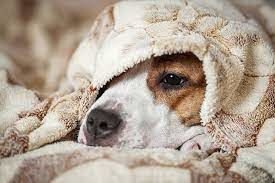
We realize that we are not limited to just educating our fur parents about dog behaviour and socialization, It is also our duty to educate you on canine health.
Because kennel cough can be a challenge, we have put together some information for each of you to read.
Dog safety is number one in our facility. By helping you understand the truth about kennel cough and being willing to talk about it, we believe you can help us and the surrounding dog community be better informed and keep dogs safe and healthy.
The Truth about Kennel Cough
Kennel cough (KC) is a common ailment in dogs equivalent to cold or flu in humans. It is caused by an airborne virus and highly contagious. Just as humans contract illnesses, kennel cough can be caught by being exposed to areas where infected dogs have been.
When an infected dog coughs, sneezes, barks– just once – he releases thousands of microscopic contaminates into the air. The bacteria and viruses can remain viable (alive and able to infect) in the air for up to 2 weeks on tiny dust particles, traveling throughout the environment until inhaled by another host.
If an infected dog drinks from a watering dish, picks up a toy or stick, or hikes his leg on a post, and another dog comes in contact with these objects, he will most likely contract Kennel Cough. Bacterium like Bordetella can survive on surfaces for up to 48 hours, ready and waiting to be transmitted to another unsuspecting host to continue the cycle of infection.
If a dog is suspected to have this illness, he must be isolated immediately.
Symptoms:
- Dry, “non-productive” cough. Sounds a bit like a honking noise
- Coughing and gagging
- Abnormal bouts of coughing in repeated intervals -Rapid breathing
- Lethargic
- Not eating
- Sneezing, runny nose and runny eyes
Common Places For Kennel Cough Exposure:
- Veterinarian Office
- Dog Day care and Boarding Facilities
- Dog Parks
- Pet stores
- Walking trails where dogs frequent
- Homes and yards with an infected dog
The Facts:
- The potential for infection is there any time your dog is around an infected dog.
- The incubation period for KC is 8-10 days meaning a dog could have the virus and infect other dogs while showing no signs of illness.
- The Bordetella (KC) vaccine is not 100% effective. Like the human Flu there are many strains of KC and the vaccination does not cover all strains.
- Dogs with weaker immune systems (puppies and older dogs) are more susceptible to the virus.
- Recovery usually takes 2-3 weeks. Proper treatment will prevent symptoms from getting worse leading to pneumonia
If you suspect your dog may have KC:
- Call the vet to set up a time for treatment and tell them you suspect KC
- Follow the doctor’s instructions and treatment plan to ensure a complete recovery
- Contact us immediately if your dog is showing any signs of KC – If your vet has confirmed that it is KC your dog will need to stay home from day care for 3 weeks.
Waggy Tails is a facility where dogs interact in groups. Our facility, like any other common place listed above is at risk for an infected dog to expose the virus to other dogs. By bringing your dog to WTDDC (or the common places listed above), they run the risk or catching KC.
The cleanest facility in the world can still get a kennel cough outbreak.
Here is how it happens: Spot goes to the local dog park on Monday to run around. He interacts and touches noses with 6 other dogs, one of them named Rufus who doesn’t know it yet, but is harbouring an upper respiratory infection because he is not showing any symptoms, now Spot has it! That Thursday, Spot goes to doggy day care and touches noses with 15 other dogs. Spot has no symptom but on Saturday he starts a coughing and hacks up phlegm. A week or so later, many of the dogs at day care start showing symptoms along with the other dogs at the dog park that came into contact with Rufus.
The day care centre is sterile at the beginning of the day, but then along came a happy dog with no symptoms who just spread sickness around like cake at a birthday party.
If you have or have had kids, this scenario would sound familiar. This is exactly how infections and viruses spread around in children. Do the parents blame the school for being dirty and unclean? No, because people understand that kids sneeze into their hands and then high-five their buddy. Dogs are no different.
WTDDC Cleaning Policy- WTDDC disinfects the entire building daily. All bedding, Play equipment, toys, fences and floors are disinfected each afternoon. We us a product called F10 which we believe is the best product on the market. While we maintain the cleanliness of our facility, we cannot guarantee another dog won’t bring an illness into our facility. Dogs are constantly under observation and as soon as one exhibits any kind of abnormal symptoms, the dog is removed from the group and isolated. Owners are immediately called to pick up their dog.
Once again KC is equivalent to a common cold or flu. As some of our children come home from school with a cold sometimes our fur-kids may catch a cold. With proper education, the current WTDDC procedures and proper veterinary treatment of our dogs, we can reduce exposure as much as possible.
Are you considering taking 2 puppies from the same litter? Please think twice!
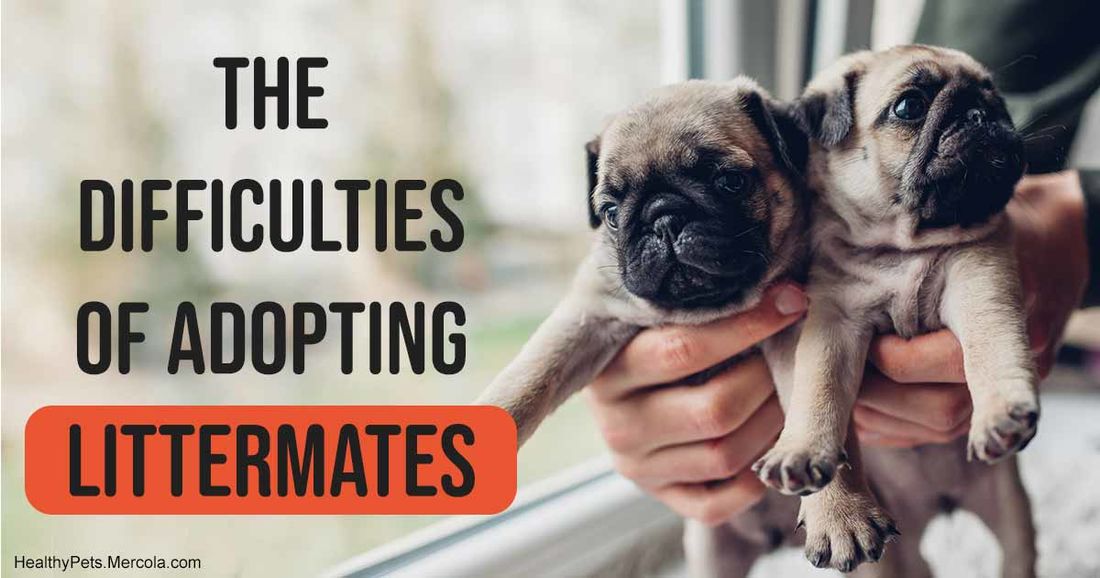
What is Littermate Syndrome?
Puppy siblings may bond so closely with each other that it makes bonding with their human caretakers and other dogs more difficult. Evidence suggests that behavioural issues may arise during key development periods because the two puppies’ deep bond impedes their individual ability to absorb and grasp human and canine communication.
Since fear is the canine’s default reaction to odd or unfamiliar stimuli, this muddled understanding of the world around them can lead to impaired coping mechanisms later on.
It’s important to note that there’s no guarantee two puppies from the same litter will develop behavioural problems associated with littermate syndrome.
Signs of littermate syndrome include
Littermate syndrome can vary in degrees of severity.
Some of the most common signs of littermate syndrome is intense anxiety when separated, even briefly. Fearfulness around unfamiliar people or dogs. This fearfulness can occur when the puppies are together or separated from each other.
Because the two puppies have bonded so closely, they don’t know how to interact with other dogs or with humans.
How do you deal with littermate syndrome?
There are many tactics you can use to prevent and lessen the effects of littermate syndrome. Prevention is always the first step that should be taken, and this starts as soon as you bring the puppies home.
One of the most important things you can do is to ensure that the two puppies spend a significant amount of time apart each and every day. By allowing them to spend all of their time together, the two may become hyper-attached. This leads to feelings of distress if one is separated from the other by even a small distance. Each puppy needs individual time and training; maximize this time apart with separate walks, vet visits and feeding times. Time apart can also include crating/sleeping arrangements, play time and training times. Personal training time should be seen as incredibly important in dealing with littermate syndrome because it encourages your puppies to look to you for direction, not to their sibling.
The longer you wait to deal with littermate syndrome, the more difficult it is, and the more traumatic for the puppies. As soon as the puppies are old enough to begin socialization, every week that goes by makes it harder to remedy the problem.
